New ScentLok BE:1 Insulated Hat offers hunters exceptional weather protection without using a hood.
This Hunting Hat is Tops
- By Jim Edlund
- Jun 4, 2024
New ScentLok BE:1 Insulated Hat offers hunters exceptional weather protection without using a hood.
Infused with technology, ScentLok’s new Insulated Bomber Hat modernizes a classic.
Late in the season, deer are primarily driven by the need for food to survive harsh winter conditions. Randy Birdsong, a seasoned hunter from Headhunters TV, emphasizes the importance of targeting food sources during this time.
While recently visiting with Terry Drury of Drury Outdoors to talk late-season deer hunting tactics, I had to ask about his giant 216” Missouri monster. If you haven’t already watched the sneak peek on Drury’s Deer Cast or their YouTube channel, you must see this massive buck, Terry’s largest buck to date
Shepperd’s pie is known as a hearty Irish dish that can be made in celebration of St. Patrick’s Day but living in the Midwest, I have made it a go-to winter comfort food dish around the holidays. Generally, we have fresh venison as well as carrots, potatoes and herbs we harvested from our garden so this the perfect recipe utilizing the resources we have around our house. Regardless of where you get your ingredients, this is a perfect hearty holiday meal that is a big hit with friends and family.
Sweet November, as some hunters refer to it, is when the highly anticipated whitetail rut creates the fire behind many hunters' passion for hunting, even if it takes sitting all day. I sought the expertise from Nate Hosie of Headhunters TV, who has been partnered with ScentLok for many years.
Beginning with the two-day youth season on the first of April and going through the last day of the regular season, which ends on May 7th, my home state of Missouri often experiences various weather changes that alter the look and feel of spring turkey season. For this reason, I have often said that the spring season can indeed be a season of change.
On April 7th, 2018, I experienced a spring hunt that confirmed the ever-changing weather patterns while turkey hunting. While accompanying a good friend and his daughter during the Missouri youth hunt, we began the morning with non-spring-like conditions. A thin white blanket of snow was on the ground, and temperatures were unseasonably colder. As often happens when snow is on the ground, the woods seemed dead silent, except for the occasional gobble of a tom turkey still sitting on the roost. It was as if everything had returned to the winter season, except for the turkeys. Even with snow-covered grounds, flurries still falling after daylight had begun, and much colder temperatures, the turkeys knew it was breeding season, and nothing would alter their spring routine. After an hour of hunting in the snow, the small girl pulled the trigger on the full strut gobbler, who had come running to our calls.
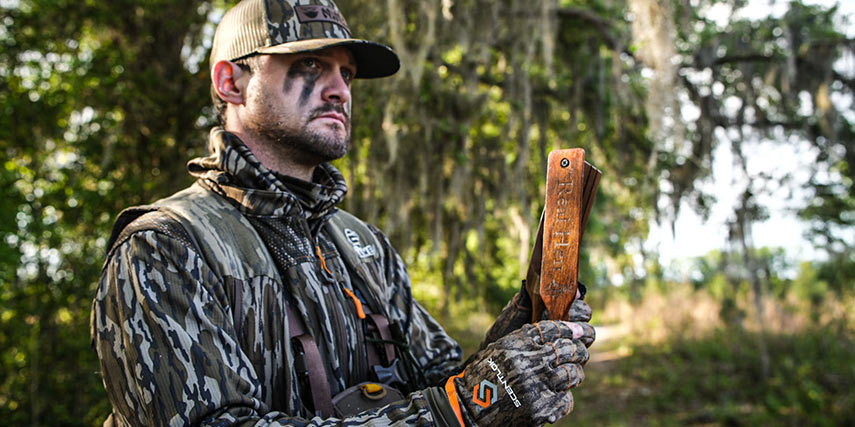
Fast forward a month, and the grass that had been covered in snow was now bright green, knee-high, and would soon have local farmers cutting it for their winter hay. On the last two days of the season, during the first week of May, my good friend and I were hunting in thin, short-sleeved shirts. After returning to our vehicle after my friend had tagged out on a memorable late-season morning, we were wiping sweat from our brows and searching for a cold drink to quench our thirst. Oh, how a month can result in such drastic changes in how things feel and look, yet the turkey hunting success continued.
Because successful hunts can occur at any point in the season, it is common to be curious as to the best time to call a spring gobbler. Many turkey hunters eagerly await that first day of the season to take advantage of filling their turkey tag early. However, when a turkey hunter is still hunting those last few days during the latter portion of the season, there is still a strong possibility for an action-packed morning of spring turkey hunting. As for choosing the early or late season as the best time to hunt, that decision falls in the hands of the hunter. If one adjusts their tactics, the entire season can provide unique times to harvest a mature gobbler. Below are the pros and cons for both early and late seasons.
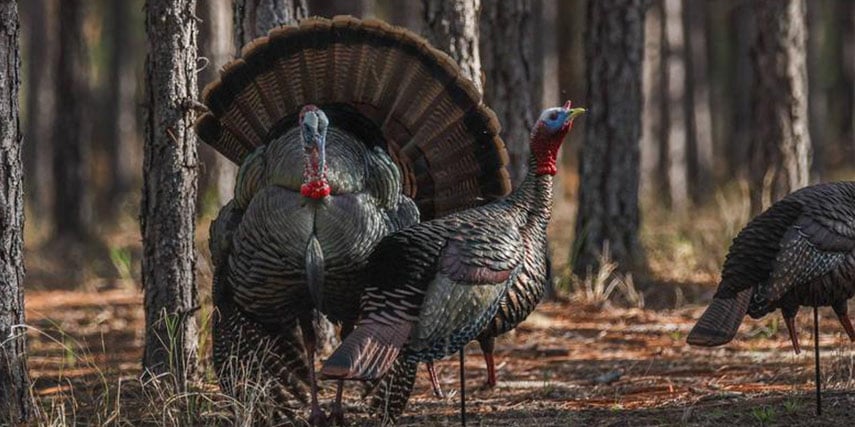
Early Season
Pros: Early season is often going to be the most popular amongst hunters, not because it is better hunting, but due to hunters anxiously waiting all winter to hunt; when the season begins, they will hunt no matter the conditions.
The beginning of the season can often be more successful for hunters due to turkeys having yet to experience much hunting pressure, meaning their daily routines are still patternable, fewer turkeys are so-called “call shy,” and turkeys are less cautious when coming to a call.
Early season can also be a great time to score on two-year-old gobblers or what some hunters call “satellite birds.” These birds are not found tagging along in the small gobbler flocks or hanging with younger flocks of jakes. The satellite gobblers can often slip around the rest of the flock of toms and jakes and come to the hunters calling attempts much faster. These same less mature gobblers can also make using a decoy combo such as the Avian X HDR Jake and Hen much more effective against more dominant gobblers. The older birds often stay back until they see a jake trying to get to his hen, which is like ringing a bell to start a fight.
Cons: In some parts of the country, turkey seasons begin in early March. Early spring seasons often mean turkeys are still in their winter flocks; the breeding season has either not yet started or is in its early stage.
Because the turkeys are in flocks and few hens have been bred, every turkey is competition when trying to call turkeys into close range. Gobblers are often henned up, and singling out one tom to try and call into shooting range is much more challenging.
As for the weather, it can be difficult to gain ground on turkeys in the early season when trying to get into a better position to begin calling because of the lack of foliage and cover.
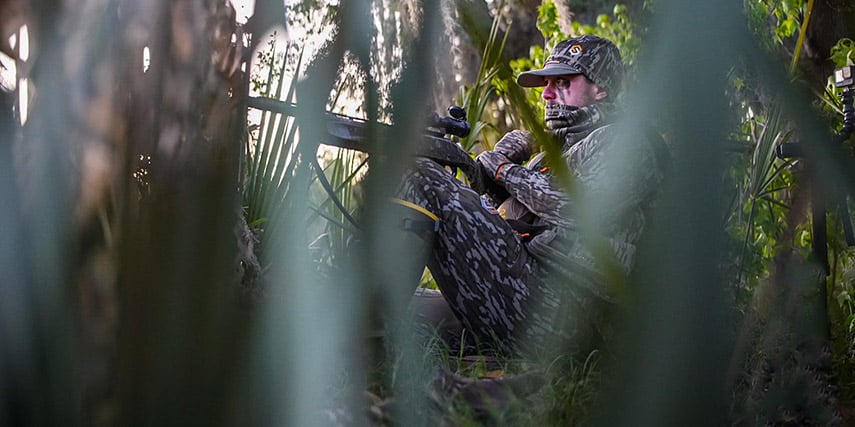
Late Season
Pros: As the season progresses, many of the hens become bred and often spend the last days of the season sitting on their nest and preparing for the next twenty-eight days of incubation before their poults hatch. The good news for hunters is that when fewer hens roam the woods when trying to call a tom into close range, there is less competition and a better chance of a tom responding to the calls.
The later season is also one of the best times to kill the dominant gobbler in a hunting area. All the fighting and pecking orders have been completed, and the dominant bird has been established. Later in the season, the dominant bird is less worried about the other toms and jakes in the area and focuses all his efforts on breeding hens. If you want to kill a heavy bird with long spurs, save a tag for the latter portion of the season.
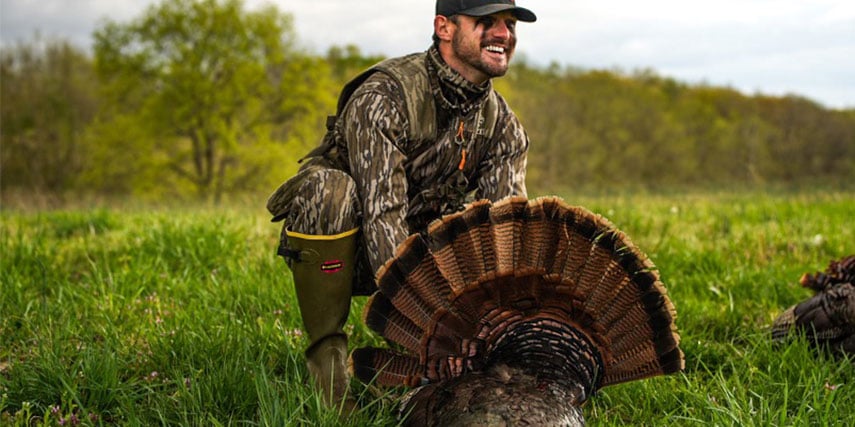
Cons: Especially on public land, during the late season, turkeys have been hunted hard and often become less vocal. Gobblers who have been hunted for several weeks in a row become more cautious about where they travel, less vocal when answering the yelp of a hen, and much slower to respond to calls making it hard for hunters to get them into close range.
Sometimes, the later season can be hot, and turkey activity decreases tremendously. In some cases, when the beginning of the season is warmer and breeding activity is in full swing, the end of the season will see hens that have already been bred, with hunting becoming much more difficult. Decoys do not work as well, and calling also becomes more challenging.
A deer hunter's difficulty in harvesting a mature buck is a challenging task and scoring a big buck year after year is even more trying. Annual success takes a large amount of dedication and hard work. When a hunter concludes the hunting season, only to realize that they still have a buck tag in their pocket, they often begin a mental checklist of what went wrong. To prevent the feeling of defeat at the end of the year, avoid these common mistakes made by deer hunters.
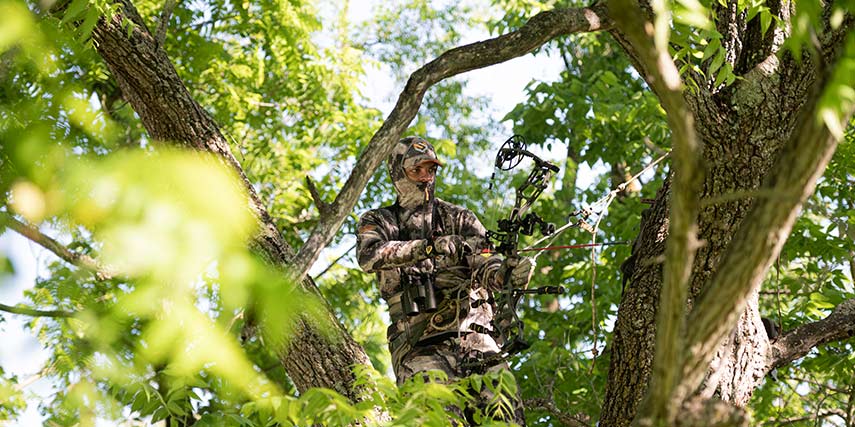
One of the most common mistakes mature buck hunters make is trying too hard. When a big buck is found on game cameras or seen near a hunting area, it is common to want to spend every moment possible pursuing that animal. The problem for hunters is that when a mature buck senses the presence of human danger to the point of feeling uncomfortable, he will move out of the area to avoid danger.
Instead, hunters must choose their days wisely, only hunting when the odds are in their favor and the target buck is predicted to be in the area. When the moon, weather, and wind are promising, it is time to hunt, otherwise, stay away and don’t risk over-pressuring the area.
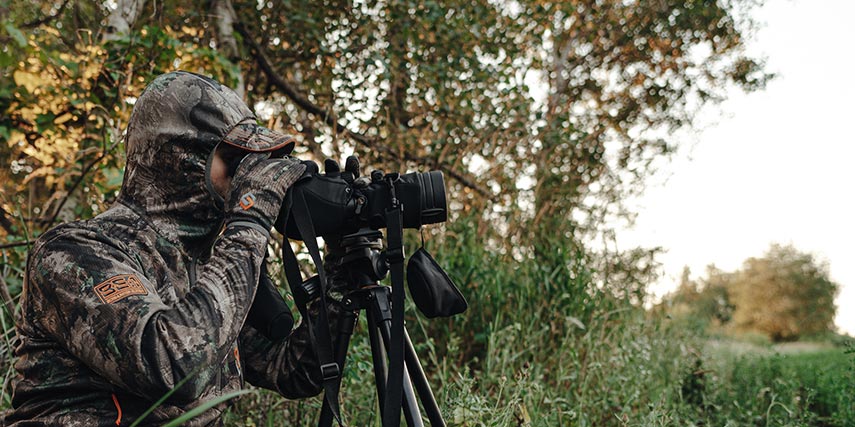
Many hunters go into the beginning of a hunting season with high hopes of getting a 160” buck. They may pass on mature bucks throughout the year in pursuit of something more prominent. The problem that many have are the lack of 160” bucks on or near the property they are hunting.
Sometimes reality can be the most formidable challenge that hunters come up against when trying to harvest a mature buck. When a hunter takes inventory of their property, they must evaluate the number and size of the bucks—also, taking into consideration if there is enough food, cover, and water to hold them there and whether there is a genuine potential to grow bigger bucks with the resources they have.
I have recently witnessed this misconception while hunting near my home in southern Missouri. After hunting a specific property for five to six years, I have never encountered a buck over 150” on game cameras or with my naked eye on this land. After talking to neighbors and evaluating the land more closely, we have noticed that the genetics in the area do not have the potential to grow bigger bucks without a significant change in their diet and a stricter “do not shoot” program for surrounding neighbors. The hard truth is that the chance of harvesting a giant buck is doubtful with minimal food due to the presence of livestock and natural habitats. The reality is that mature bucks can vary in size depending on where you are hunting.
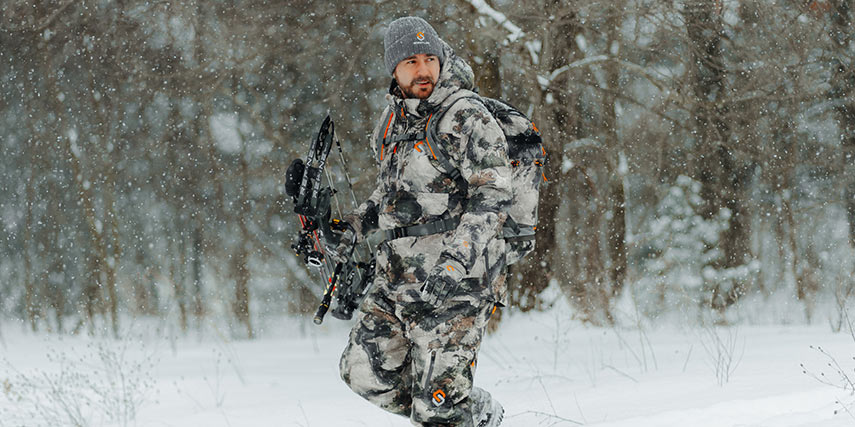
It is no secret that the most popular time to hunt for big bucks is during the November rut. The popularity stems from the best overall buck movement during the breeding season. Many assume that the best time to harvest a mature buck is also during this time. However, to outsmart one of the earth's most intelligent creatures, hunters must widen their horizons and hunt during the early season in September and the late season in December and January.
Many veteran trophy hunters will agree that some of the easier times to pattern a mature buck are during the early season when they are still in their summer feeding patterns and during the latter part of the year when they spend much of their time near food, replenishing their bodies from the rut and preparing for the upcoming harsh winter.
The early season may be the best time to harvest a buck if you have experienced mature bucks on game cameras throughout the summer, only to have them disappear throughout the fall. Even though the temperatures may still be warm during this time, when a buck is easier patterned, it may be your only chance to harvest him.
After the rut is over is also a great time to find mature bucks who have been M.I.A. throughout the fall. After the breeding season, bucks tend to travel to different areas where food is more plentiful, and competition from other bucks is less. During this time of year, spending time sitting over a significant food source can reap big rewards. It may not be as exciting of a hunt as during the rut, but the possibility of seeing the buck of your dreams step into shooting range makes the earlier portion of the season that was spent hunting hard and waiting worth it.
Like clockwork, at 8:00 a.m. on the opening day of firearms season, I received a text from my father, saying that he was climbing down from his stand and was going on a walk; this had become his yearly routine. For several years, I disagreed with my father's decision to take off walking instead of staying in his stand. Though it was not my hunting style, it worked for him on many occasions. After my father's text, it wasn’t long before I heard the blast from a distant gunshot.
December is notoriously challenging for deer hunters looking to score on a mature buck. Every year, bucks come out of the rut, exhausted and malnourished. They have experienced hunting pressure to such an extent that they are ready to lay low until rejuvenated enough to resume their regular travel pattern. Oddly enough, hunters have the same mindset when getting out in colder temperatures, trying to finish the season with a bang.